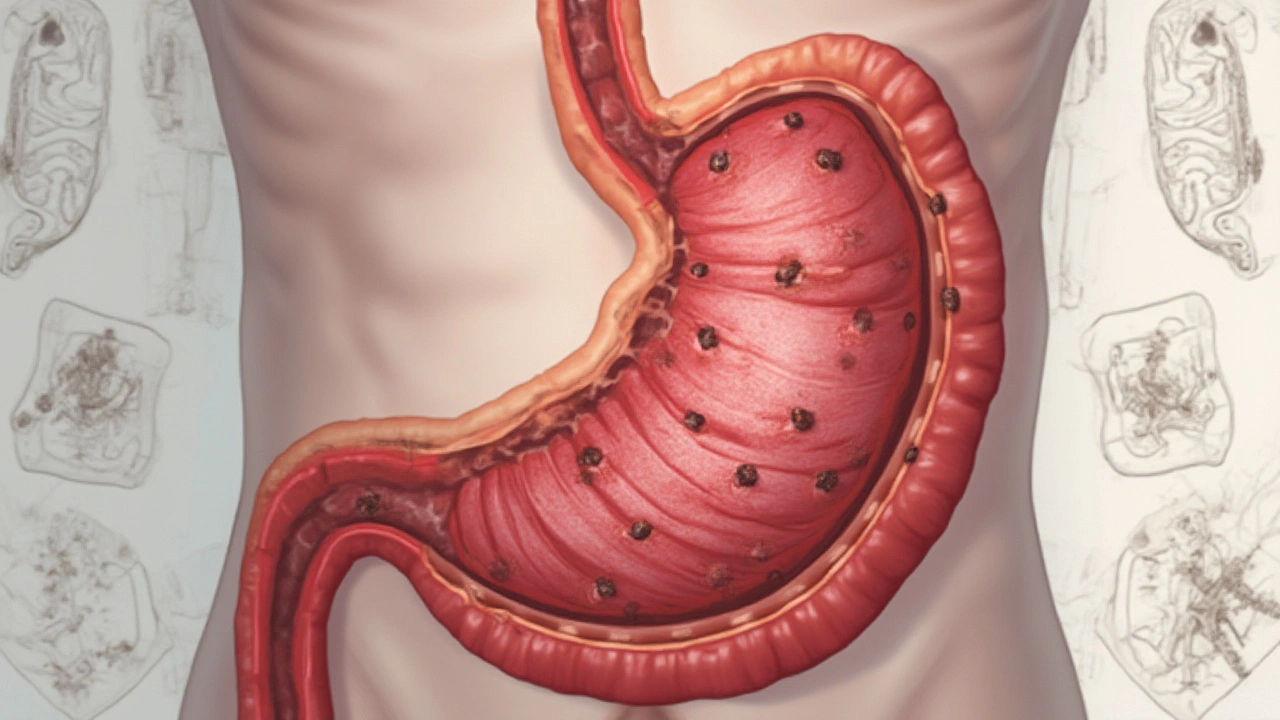Atrophic Gastroenteritis: What It Is and How to Manage It
If your stomach has started feeling empty, painful, and you keep losing weight, you might be dealing with atrophic gastroenteritis. It’s a condition where the lining of the intestines thins out, making it hard for your body to absorb nutrients. The result is fatigue, diarrhea, and often a feeling of constant hunger that never gets satisfied.
Key Signs and How It Happens
People with atrophic gastroenteritis usually notice persistent diarrhea, bloating, and cramps after meals. You might also see pale stools, weight loss, and a general lack of energy. The thinning of the gut lining can be triggered by chronic inflammation, autoimmune attacks, or long‑term infections. In many cases, celiac disease or Crohn’s disease is the underlying driver, but infections or certain medications can cause similar damage.
Getting the Right Diagnosis and Treatment
First step is seeing a doctor who will likely order blood tests to check for anemia, vitamin deficiencies, and auto‑immune markers. Endoscopy or colonoscopy with biopsies lets the doctor actually look at the intestinal walls and confirm the atrophy. Once diagnosed, treatment focuses on fixing the underlying cause and supporting nutrient absorption.
If celiac disease is the culprit, a strict gluten‑free diet can halt the damage and let the gut heal. For inflammatory bowel disease, doctors may prescribe steroids, immunosuppressants, or biologic drugs to calm the immune system. Antibiotics are used only when a bacterial infection is identified.
Regardless of the cause, most patients benefit from taking vitamin and mineral supplements. Vitamin B12, iron, calcium, and fat‑soluble vitamins (A, D, E, K) are often low because the gut can’t absorb them well. Your doctor can guide you on the right doses and whether you need daily or weekly shots.
Diet tweaks make a big difference. Aim for small, frequent meals that are easy on the stomach—think boiled chicken, rice, and well‑cooked vegetables. Avoid high‑fat, spicy, or highly processed foods that can irritate the lining. Some people find that a low‑FODMAP diet reduces bloating and diarrheal episodes.
Staying hydrated is crucial. Diarrhea can cause rapid fluid loss, so drink water, oral rehydration solutions, or clear broths throughout the day. If you’re losing a lot of weight, a nutritionist can help design a high‑calorie, nutrient‑dense plan to get you back on track.
Regular follow‑ups are a must. Your doctor will monitor blood work, check symptom improvement, and adjust meds as needed. If symptoms flare up suddenly—severe abdominal pain, vomiting, or blood in stools—seek medical help right away.
Living with atrophic gastroenteritis can feel overwhelming, but understanding what’s happening in your gut and sticking to a clear treatment plan can bring relief. Keep an eye on your diet, take prescribed supplements, and stay in touch with your healthcare team. With the right steps, you can manage symptoms and protect your health for the long run.
Atrophic gastroenteritis flies under the radar but can lead to major digestive problems if not caught early. Dig into symptoms, diagnosis, and what modern treatment actually involves today.
